Building a Thames River Skiff
Within the pages of Eric McKee’s Working Boats of Great Britain there are drawings of a 24′ Thames skiff attributed to W.A.B. Hobbs* at Henley-on-Thames in the very early part of the 20th century. Thames river skiffs were an evolution of the wherries used to transport cargoes and passengers up, down and across the Thames for many years before bridges and other forms of transport put them out of business. Although the vast majority of skiffs have been used for leisure purposes, they are worthy of inclusion in McKee’s book as so many of them have earned a living by being hired out.Retired firefighter Lawrence Shillingford decided he wanted to build a version of the Hobbs skiff when he enrolled in the nine-month course at the Boat Building Academy in Lyme Regis, UK, in 2014. The workshop space there was limited so the design was scaled down to 21′ with a CAD program by tutor Mike Broome. The process was by no means simple, primarily because the boat already had very little freeboard. “It was just a question of tweaking it a bit,” Mike said “In essence it’s the same as the Hobbs boat but with more freeboard and a tiny bit more beam.”

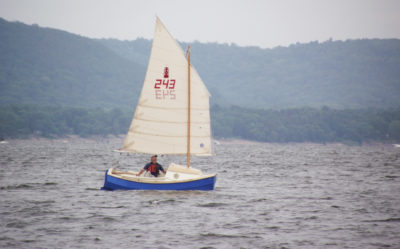
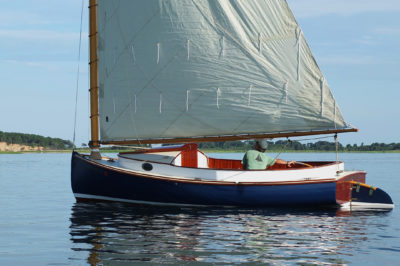
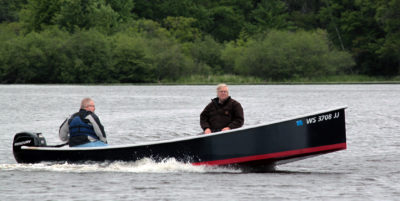
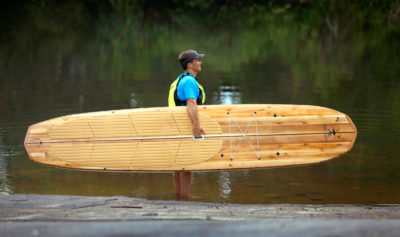
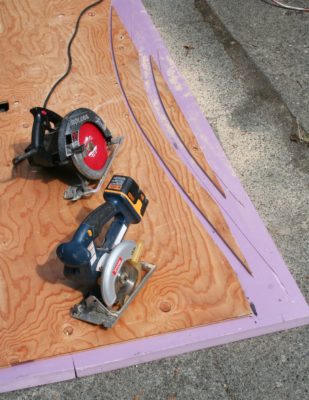
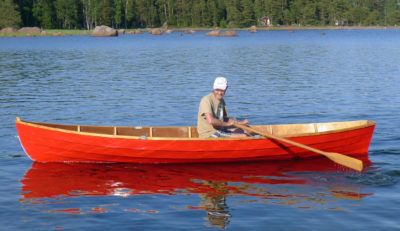


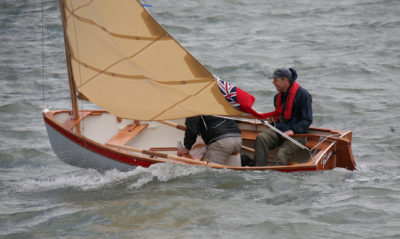
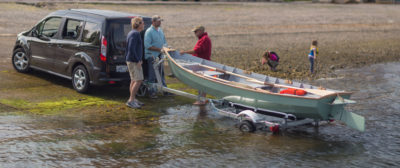
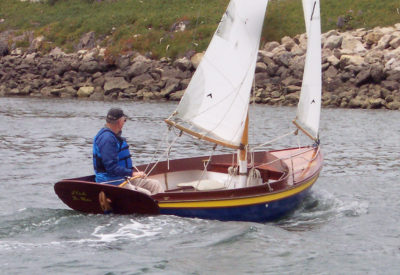
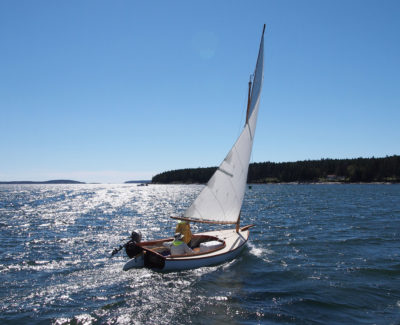
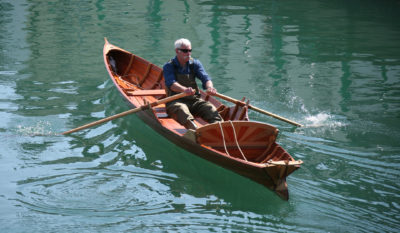
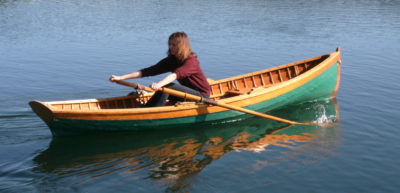
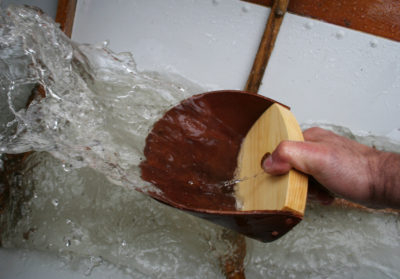
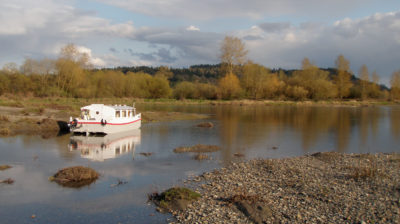
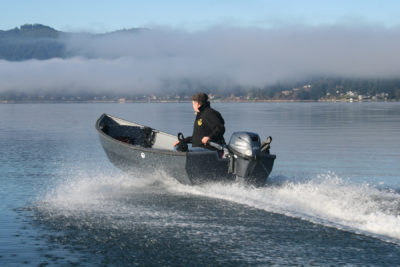
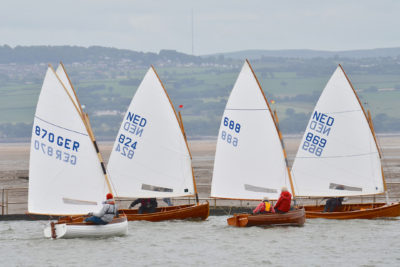


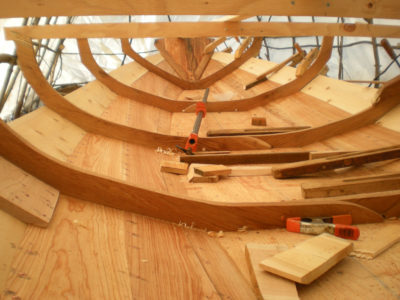
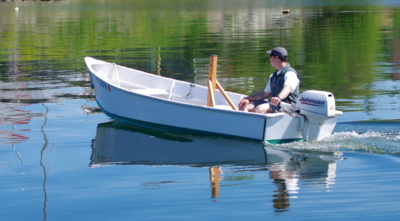
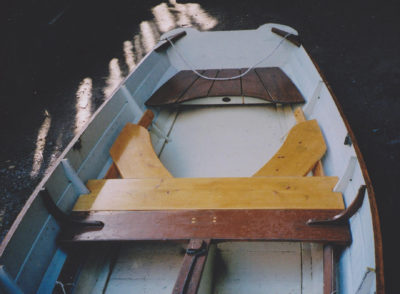
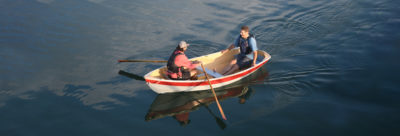
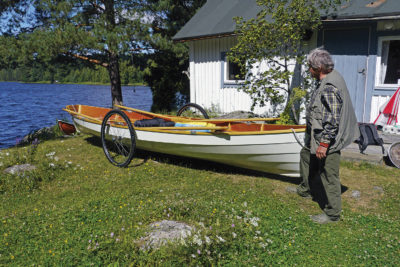
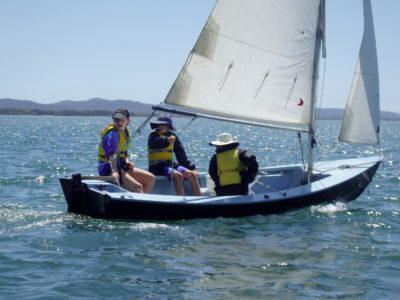
Those discontinuous frames go back at least as far as the 17th century. The magnificent Queen Mary’s shallop preserved at the National Maritime Museum in Greenwich has them as did several other great boats of this type. It must have been common. We used it with building a recreation of George Waymouth’s Light Horseman of 1605. Besides discontinous frames, these boats had the Scandanavian keel and stem structures with narrow deep stems and keels with short vertical scarfs. Waymouth’s boat was a kit boat, something that discontinous frames make easy as the complicated garboard keel lower stem structure can be built and travel as a whole, while the rest of the boat is disassembled for rebuilding.
One of the things that I noticed on these skiff frames is that they are really thin and quite wide so that the vertical nail holes have to be edge drilled with precision. These are all sawn frames and I suspect that the nail holes are drilled off the boat then guide the drilling through the planking. Accuracy is so good and precision is so critical that I wonder if they aren’t done on a drill press.
The other thing I found fascinating in talking with the Thames skiff rowers is “rowing on the strings.” There is a Thames skiff club that shares quarters with the Royal Canoe Club in Teddington. Their boats, at least when racing, have strings that hold the oars down, kind of like gates on modern racing locks. I don’t recall how they are fastened, I think a hole with a knot on one side then a splice that fits over the the other. Anyway, when coming into a float or dock, the string is opened, the oar jumped out then the string reset, and the oar set on top of the string. There is enough pin sticking up so you can still row gently to make the landing or get away from the dock.
A beautiful Thames skiff. Having the video of Lawrence Shillingford rowing made this article really come alive. Thanks.